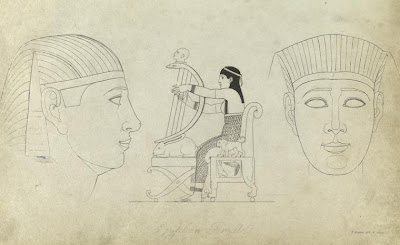








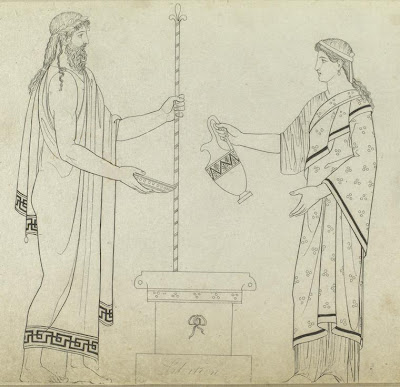
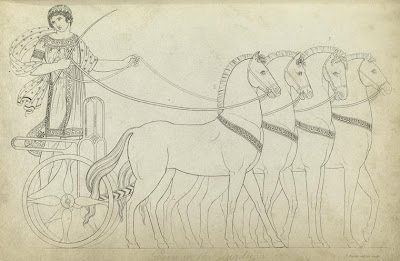

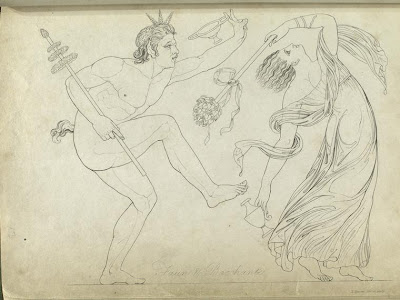


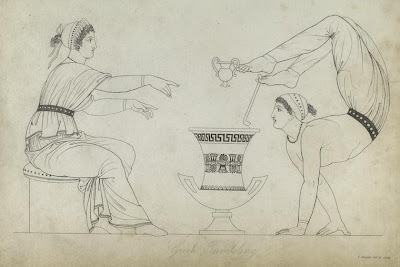
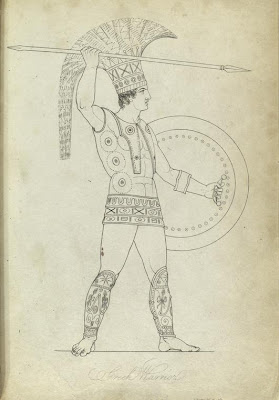


[click to enlarge to full size; mouseover for captions]
{I cleaned up the background a little in a couple of these images but could have spent a long time on it - an idea that was quickly abandoned}
'An illustration of the Egyptian, Grecian and Roman costumes ; in forty outlines, with descriptions, selected, drawn and engraved by Thomas Baxter' from 1814 is online at NYPL {thumbnail page}.
Many of Baxter's illustrations were based upon figures from Sir William Hamilton's vases in which in which Greek subjects are most prevalent "as it is to them we owe nearly all that is elegant or dignified in Art". The 'Costumes' album was dedicated to Professor Henry Fuseli from the Royal Academy Schools, who tutored Baxter in painting.
The National Maritime Museum have a rather beautiful pencil/watercolour sketch album by Baxter (with background information). One of the subjects in the sketch album is Lady Hamilton, whose interesting life I have mentioned previously. I might have to return to this album in the future. [Thanks Tomasz T!]
----------------
Update: Tangential but worth noting here - the Scout Report included a mention today of a site I'd not seen before: TIMEA (Travelers in the Middle East Archive) from Rice University. It seems after a brief look to be a formidable/excellent collection of resources. TIMEA is a 'digital archive that focuses on Western interactions with the Middle East, particularly travels to Egypt during the nineteenth and early twentieth centuries.' Full texts, maps, photographs and more.
Saturday, January 20, 2007
Classical Costumes
Friday, January 19, 2007
Children of Our Town



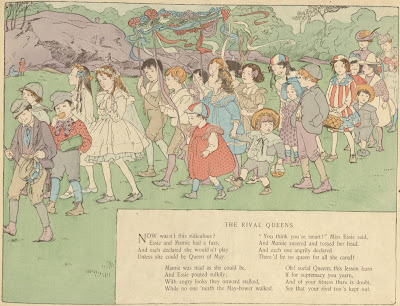
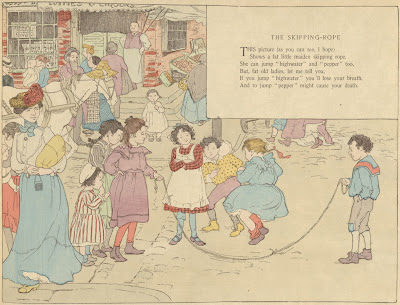
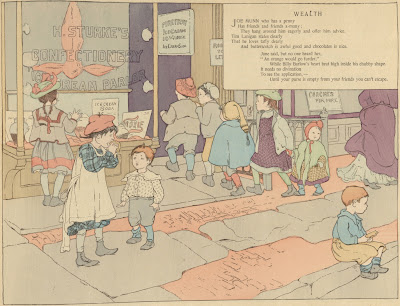







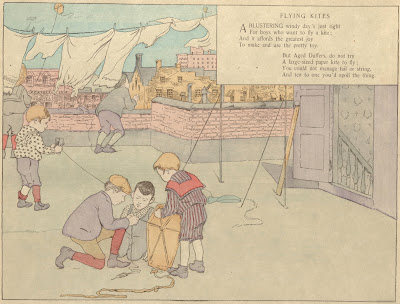

'Children of Our Town' 1902 with wonderful Art-Deco illustrations by E. Mars and M.H. Squire and verses by Carolyn Wells is online at the Library of Congress. There is perhaps more than a little irony attached to the social (or is it instructive?) commentary in the book, such as it is, in so far as only the children of the wealthy would have had the opportunity to see the book. 'Our Town' refers to New York City.
Searching around brought up some interesting background..
Maud Hunt Squire [bio: pdf] and Ethel Mars [bio: pdf] are famous (on one level) for being a gay couple - although American, they spent the majority of their lives in France. Such was their impact or renown that they were the couple upon whom Gertrude Stein based her 1922 short story 'Miss Furr and Miss Skeene'; said to be the literary debut of the word 'gay' in its modern usage. That short story in turn influenced the style used by Hemingway in one of his stories ('Mr & Mrs Elliot'). Never let it be said that the childrens literature genre has no influence.
There are a couple of other Squire/Mars illustrated books online..
- 'The Adventures of Uysses' by Charles Lamb, 1902.
- 'The Heroes' by Charles Kingsley, 1901.
- 'A Child's Garden of Verse' by Robert Louis Steveson, 1902.

Thursday, January 18, 2007
Industry Design Sketches
{I think it's a view inside the oven looking up}. The lower
section is a schematic of brick placement.

a dynamometer in about 1790 which was able to measure both
tension and pressure exerted by a person or animal. An
anthropological expedition in 1800 to the South Seas employed
this device to gauge whether there was a relationship between
physical degeneration and civilization progress. In his
conclusion, "Péron claims that one must assume that the
state of savageness is actually a state of feebleness". (ref)

It was installed in the grounds of the French Academy of Science in 1799.

that would receive wider applications as replacements for screw pumps. The
picture from the last decade of the 18th century shows of course a fire hose
pump in action. Somehow this pump came to be acquired by the French Academy
of Science as one of its first purchases for which they had to pay restitution some
years later (something about it being seized during the latter days of the revolution).
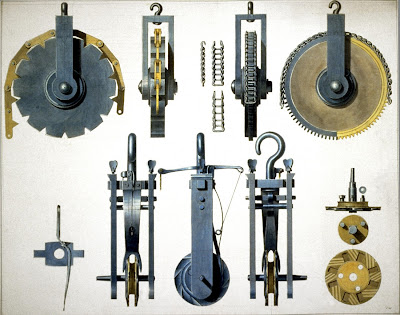
commission from the French Academy of Science.


hydraulic sheet metal cutter for boiler making - a design by the Swiss
industrialist Johann-Sebastian Von Claiss, who worked closely with the
French government at the end of the 18th century.

by Émile Lecoq (drawing by Lavasseur, 1855).

to identify and encourage notable inventors at the end of 18th century. On the
recommendation of Lavoisier, Jean-Godefroy Mercklein received a monetary
award for his leather marking/punch machine (among his other inventions).

was granted to Nicolas-Marie Dufour in 1808 for a wig making design.
Somehow this curious device was supposed to seamlessly weave
hair and silk, driven by a complex of pulleys. O...K.

of a water drawing tower on the Moselle River in Metz.

1755 was made in Barcelona and is said (website commentary)
to show the poor quality of technical illustration in the 18th century.

showing the manufacting of sewing needles.

a lever-controlled, portable scale from ~1805 - a variation
of a contemporary design by Thomas Kettle from England.

1807 design for the French Agricultural Society.
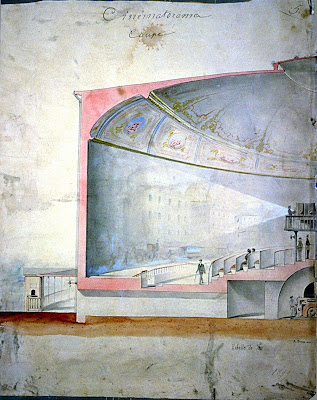
indicating that is
"Auguste Baron's Speaking Cinématorama".
Baron was a civil engineer and one of the early pioneers in sound films.
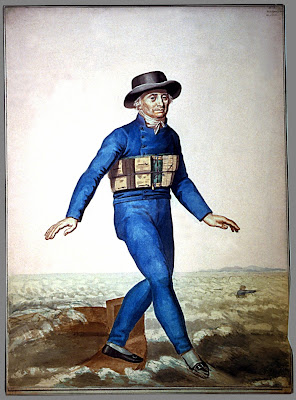
of a post-revolutionary French terrorist, but rather, it's quite the opposite: the
model is wearing the latest in shipwreck personal flotation devices. It seems
there was a flurry of industrious activity applied to rescue belts and harnesses
in the late 18th century, spurred on by design contests in (at least) France,
England and Sweden. They all relied (of course) on leather air bladders and/or
cork filled compartments and I think the above picture was one of many
submitted to the French Academy of Science for approval and/or award.
Le Portefeuille Industriel is a collection of technical drawings from Musée des Arts et Métiers. The web display favours the more artistic examples from the collection prior to ~1815 after which the drawing style became more austere. The website provides in many cases quite a bit of background (all in french) and I've posted the majority of the collection [click on the images above for much larger versions - thanks to viewing the page source]. All care taken with translation/interpretation but I would never rely on me - mouseover the images for the original website captions in french.



























































